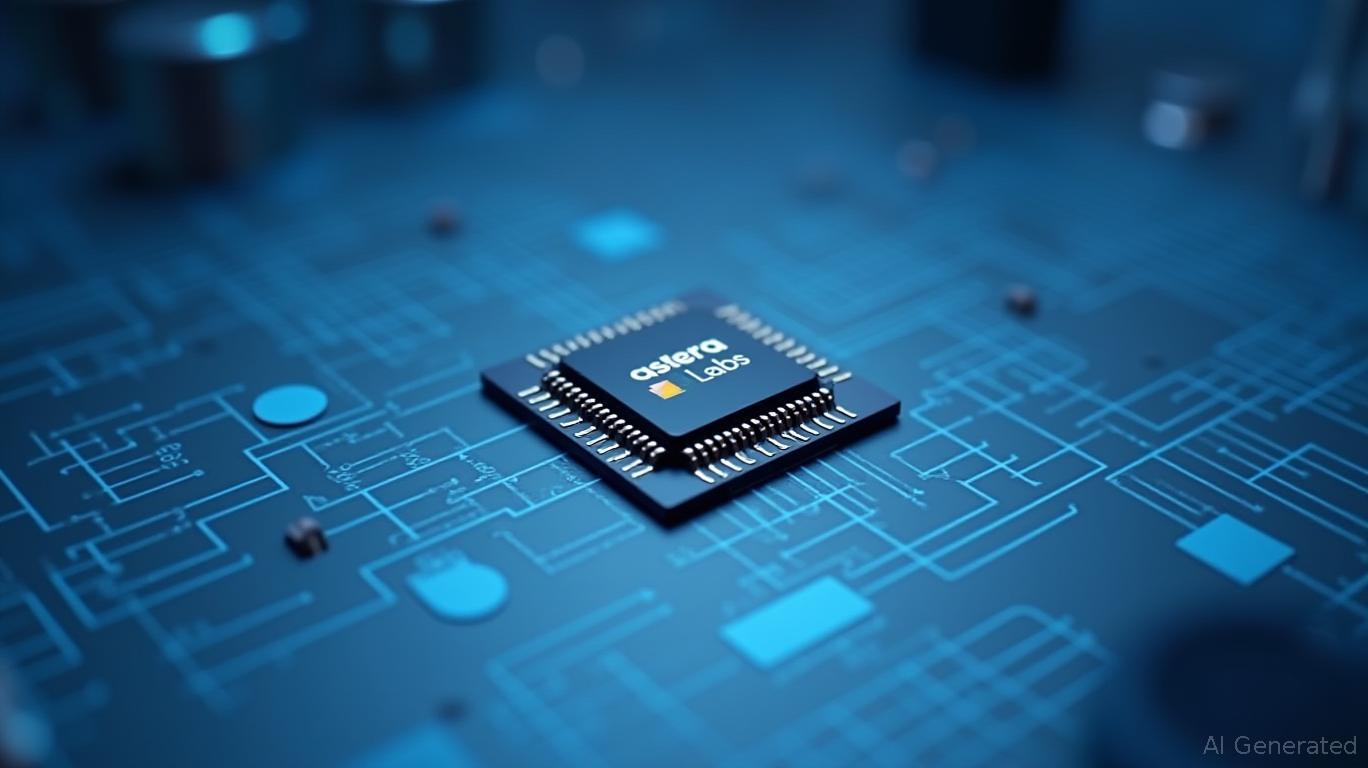Astera Labs: The Connective Tissue of the AI Revolution
The rapid ascent of artificial intelligence has created a voracious appetite for advanced data center infrastructure. At the heart of this transformation lies
Labs (ALAB), a semiconductor firm whose chips are already embedded in over 80% of AI servers globally. By leveraging its dominance in PCIe retimers—a critical component for high-speed data transfer—and expanding into emerging markets like CXL (Compute Express Link) and AEC (Active Electrical Cables), Astera has positioned itself as a linchpin of the AI era. But is its growth sustainable, and does its stock offer value in a crowded semiconductor space? The answer, based on its technical moat, hyperscaler partnerships, and product diversification, is a resounding yes.
The PCIe Retimer Monopoly and Why It Matters
Astera's flagship product, the Aries 6 PCIe/CXL Smart Retimer, is a testament to its technical prowess. Unlike traditional “redrivers,” these chips solve signal integrity challenges at the extreme speeds of PCIe Gen 5 and 6, enabling the dense server architectures required for AI workloads. With GPU-based AI clusters—driven by NVIDIA's H100 and Blackwell GPUs—demanding ever-greater bandwidth, Astera's retimers are indispensable.
The firm's Q1 2025 revenue of $159.4 million, up 144% year-over-year, underscores this demand. This growth is not merely cyclical; it's structural. Hyperscalers like AWS, Google, and Microsoft are racing to build AI superclusters, and Astera's chips are already embedded in leading GPU rack-scale systems, with shipments ramping since Q2 2025. Competitors such as Marvell and Broadcom lack this combination of PCIe 6 expertise and hyperscaler traction, ceding ground to Astera's “connectivity superhero” status.
Expanding into CXL and AEC: A Strategic Diversification
While PCIe retimers form the bedrock of Astera's business, its foray into CXL and AEC markets adds critical growth catalysts. CXL, a standard for memory pooling in AI clusters, is becoming essential as models grow larger. Astera's Leo CXL controllers allow servers to share memory across chips, reducing latency and boosting efficiency—a must-have for training trillion-parameter models.
Meanwhile, its Taurus AEC modules address the physical layer of data center interconnects, enabling longer, more reliable signal transmission than passive cables. Though specific CXL/AEC market share data for June 2025 is unavailable, Astera's design wins with Scorpio fabric solutions—a key standard for rack-scale systems—and its role in the UALink 200G consortium (a high-speed interconnect standard for AI pods) suggest strong early traction. These moves diversify its revenue streams while deepening its integration into AI infrastructure ecosystems.
Defending Against Competitors: A Moat of Technical and Ecosystem Leadership
Astera's moat is twofold. First, its engineering team has pioneered solutions to the “last mile” signal integrity challenges that traditional chipmakers cannot solve. Second, its partnerships with NVIDIA (evident in PCIe 6 interoperability testing) and hyperscalers lock in design wins for years. While rivals may compete on price or features, Astera's unique ability to deliver both performance and reliability in PCIe 6 and CXL ecosystems is hard to replicate.
The firm's Cloud-Scale Interop Lab, which tests its chips in real-world AI environments, further insulates it from disruption. As data centers evolve toward “rack-scale computing”—where servers are tightly coupled into single units—Astera's solutions are purpose-built for this architecture, whereas competitors' products often cater to legacy designs.
Sustainability of Design Wins: Riding the AI Server Boom
The AI server market is set to explode. IDC forecasts that AI-optimized servers will grow at a 22% CAGR through 2027, driven by large language model (LLM) training and generative AI applications. Astera's design wins are not just in current systems but also in next-gen platforms. For instance, its Scorpio P-Series Smart Fabric Switches are integral to hyperscalers' modular data center builds, ensuring recurring demand as these companies expand their AI footprints.
Moreover, the shift to PCIe 6 and CXL is not optional—it's a hardware prerequisite for scaling AI. This creates a “lock-in” effect: once hyperscalers adopt Astera's chips, they're unlikely to switch without incurring massive retrofitting costs.
Investment Thesis: A Compelling Buy at Current Levels
At its current valuation of ~$3.5 billion, Astera trades at roughly 23x its 2025 revenue estimate. While not cheap, this multiple is justified by its ~40% annual revenue growth trajectory and the secular tailwinds of AI infrastructure spending. Comparatively, peers like Marvell (MRVL) trade at similar multiples but lack Astera's AI-specific focus and hyperscaler ties.
The near-term catalysts are clear: its Q2 2025 revenue guidance of $170–175 million suggests momentum is accelerating. Longer-term, the rollout of CXL 3.0 and PCIe 7 standards could create new opportunities for Astera to leverage its design leadership.
Risks to Consider
- Hyperscaler CapEx Cuts: If AI adoption slows or hyperscalers pare back data center spending, demand for Astera's chips could falter.
- Competitor Innovation: While Astera leads today, rivals may close the gap with breakthroughs in signal integrity or CXL solutions.
- Supply Chain Constraints: Though Astera outsources manufacturing to TSMC and Samsung, any disruptions could impact shipments.
Conclusion: A Long-Term Play on AI's Infrastructure Needs
Astera Labs is not just a beneficiary of the AI boom—it's an enabler. Its technical edge, ecosystem partnerships, and strategic diversification into CXL/AEC markets create a durable moat. With hyperscalers on a multiyear spending cycle to build AI infrastructure, Astera's growth runway is long. For investors willing to look beyond near-term volatility, ALAB offers a rare chance to own a critical supplier in an industry that will define the next decade of computing.
Rating: Buy
Price Target: $28 (implied ~25% upside from June 2025 levels)

Comments
No comments yet